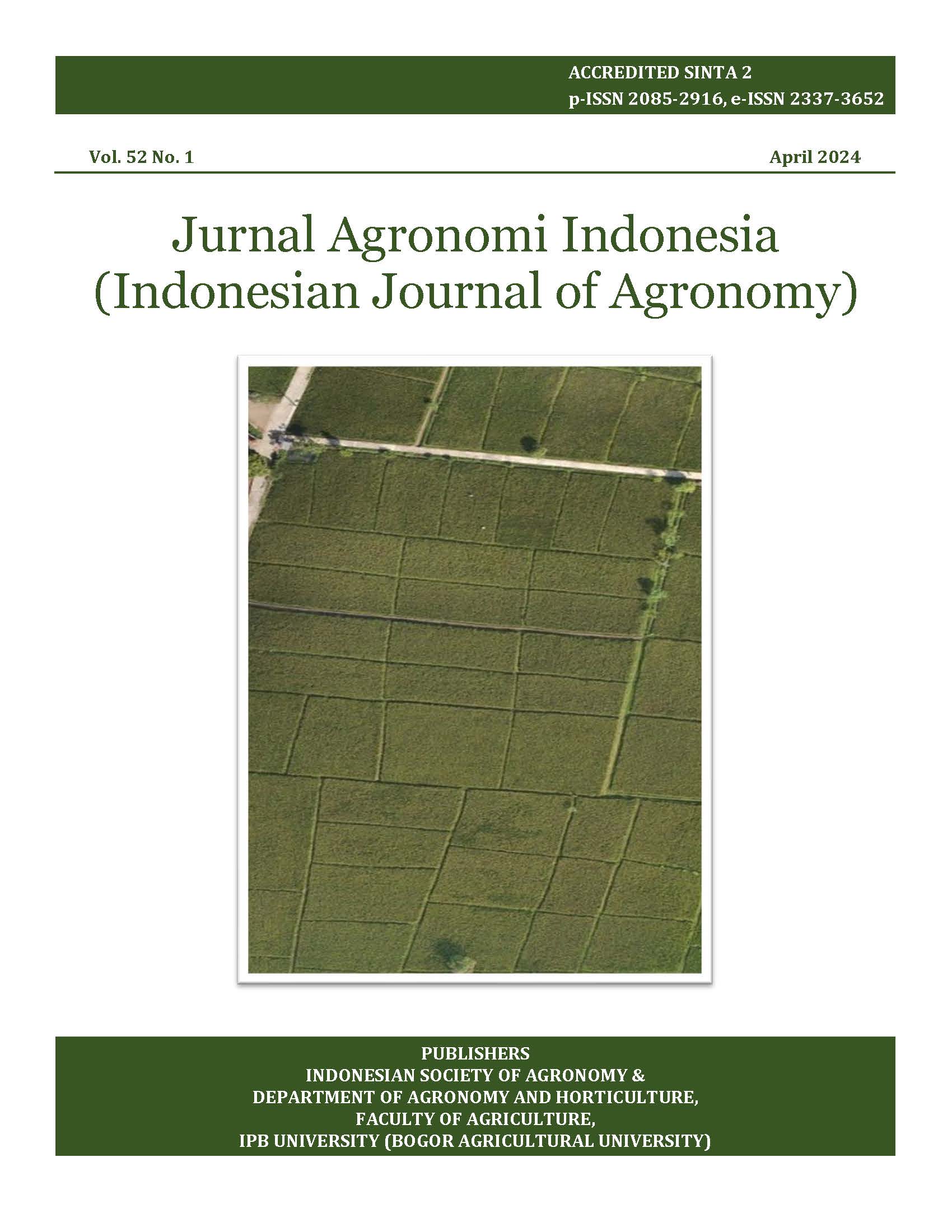Propagule origin and soil organic carbon content determine the growth and yield of Amorphophallus muelleri Blume
Abstract
Amorphophallus muelleri Blume locally called Iles-iles or porang becomes a new commercial commodity in Indonesia. The tuber as the most economic value contains high glucomannan. It has been speculated that the high variation in production among farmers is due to different planting materials and soil organic carbon (SOC). Thus, the research aimed to evaluate the growth and yield of A. muelleri from different planting materials and levels of SOC. The research was carried out at Leuwikopo Experimental Station IPB Bogor from December 2021 to August 2022, using a nested design. The main plot was the level of SOC (2%, 3%, 4%, 6%), and the sub-plot was planting materials (seeds, bulbils, and tubers from leaf cuttings). The results showed SOC status determined growth and yield. Plant height, stem diameter, number of leaves, canopy width, leaf greenness, number of tubers, weight, and size of tubers, stomatal conductance, and intercellular CO2 were significantly affected by SOC level. SOC at a level of 6% stimulated the highest growth and yield. Planting materials also determined the growth and yield. Plants originating from bulbils produced the highest yields, followed by tuber from leaf cuttings, and seeds. It is recommended to plant bulbils accompanied by maintaining SOC at a level of 6%.













